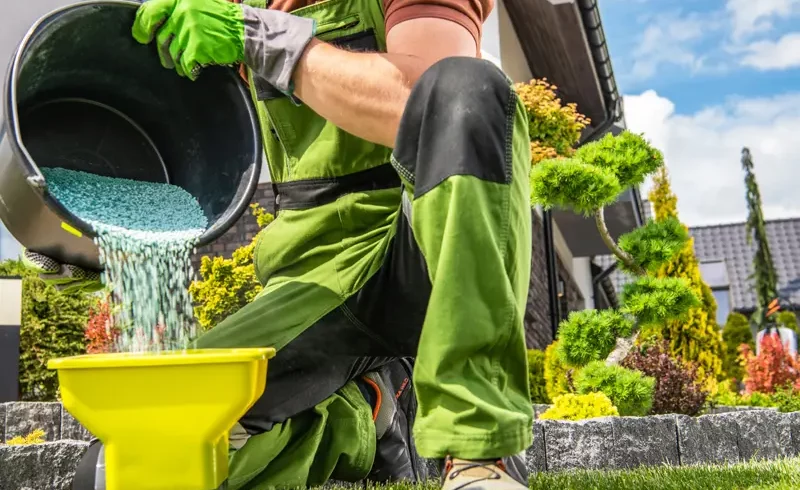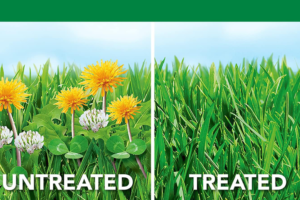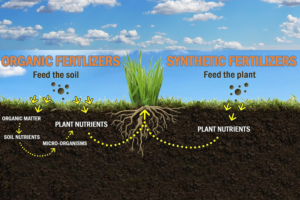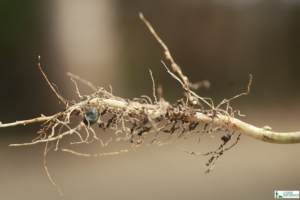
Fall is a crucial time for lawns. You may not realize it, but fertilizing now can make all the difference in a lush, healthy lawn for the next season. With the right fertilizer, you can create the perfect environment for your grass to grow strong and vibrant. But, with so many fertilizers available, how do you know which is suitable for your lawn?
Let’s look at the benefits of fertilizing in the fall, the types of fertilizers available, how to select the right one for your lawn, how to apply it, and how to care for your lawn afterward. By the end of this article, you’ll have all the information you need to get your lawn ready for the coming season. So, please don’t wait any longer: let’s get fertilizing!
Key Takeaways
- Fall fertilization promotes healthy growth and root development, making the lawn resilient to cold weather.
- Fertilizing in the fall reduces the need for spring fertilization and helps control weeds.
- The choice of fertilizer depends on the climate, soil type, and grass type.
- Watering after fertilizing helps the fertilizer settle into the soil and reach the grassroots.
Benefits of Fertilizing in the Fall
Fertilizing your lawn in the fall provides numerous benefits, so take advantage of this opportunity to give it the nutrients it needs! The cooler temperatures in autumn and shorter daylight hours make this an ideal time to aerate and fertilize. Aeration benefits the lawn, as it allows air and water to penetrate deeper into the soil, which helps the roots of the grass to reach the essential soil nutrients.
Fertilizing in the fall helps the soil remain healthy and strong, creating a healthier and more vibrant lawn. Applying fertilizer in the fall also gives the soil the energy needed for healthy growth and root development. This, in turn, helps the lawn to become more resilient when cold weather hits. When the soil is healthy, it contains more organic matter, which helps the lawn absorb more moisture.
As a result, the lawn is less likely to suffer during dry spells and can cope better with the cold temperatures of winter. By fertilizing in the fall, you can also reduce the need to fertilize in the spring. This means less work in the spring and more time to enjoy your lawn. In addition, fertilizing in the fall can help to reduce the number of weeds in the spring. By providing the lawn with all the essential nutrients it needs, it will be better able to fight off weeds and other pests.
In short, fertilizing your lawn in the fall can help it to be healthier, more vibrant, and more resilient. It can also reduce the amount of maintenance needed in the spring. Now that you understand the benefits of fertilizing in the fall let’s look at the different types of fertilizers you can use.
Types of Fertilizers
Making sure your lawn is healthy starts with choosing the right type of fertilizer. Fertilizers provide essential nutrients to plants, allowing them to grow and thrive in different conditions. Various fertilizers are available on the market, each with its benefits. Organic fertilizers comprise natural materials like compost, manure, and other organic materials.
They are usually slow-release, providing nutrients over some time. Synthetic fertilizers are manufactured with chemicals and elements such as nitrogen, phosphorus, and potassium. They are fast-acting and provide an immediate boost of nutrients. The right fertilizer for your lawn depends on your climate, soil type, and the type of grass you have.
There are also liquid fertilizers that can be applied directly to the lawn. Whichever you choose, ensure it suits your lawn’s specific needs. Selecting a fertilizer that is too strong or too weak can cause damage to your lawn.
Thus, matching the right fertilizer to your lawn is essential for optimal growth and health. Knowing what fertilizer to choose and how to apply it correctly ensures a healthy and vibrant lawn.
Selecting the Right Fertilizer for Your Lawn
For a lush and verdant lawn, selecting the right fertilizer is crucial. An excellent place to start is by having pre-application testing and soil analysis done to determine the type of fertilizer that will best meet your lawn’s needs. This will provide information on the soil’s pH, nutrient levels, and other essential factors. The most common type of fertilizer used for lawns is nitrogen-based. This helps promote green grass growth and can be applied in liquid or granular form.
On the other hand, phosphorus-based fertilizers are more suited for promoting root growth. Potassium-based fertilizers are essential for boosting the lawn’s overall health and helping it better withstand the stresses of unfavorable weather. To ensure that you are using the correct type of fertilizer, following the instructions on the packaging is best. This will usually provide information on what type of fertilizer is best for your lawn and instructions on how to apply it.
It is also important to ensure that you are using the right amount of fertilizer, which can be determined by following the directions on the package. When selecting a fertilizer for your lawn, it is also important to consider the time of year. During the fall season, you will want to choose a fertilizer that contains slow-release nitrogen, as this will help ensure that your lawn gets the nutrients it needs over a more extended period.
Select a fertilizer specifically designed for use in the fall, as this will help ensure that your lawn is adequately nourished. Selecting the right fertilizer for your lawn can help ensure it is healthy and vibrant year-round. With the right choice, your lawn can look its best and withstand the changing seasons.
By taking the time to research and select the ideal fertilizer for your lawn, you can enjoy a lush and verdant environment for years to come. Making the right choice in fertilizer can be the key to a beautiful lawn.
Choosing the right fertilizer for your lawn can make all the difference in having a healthy and vibrant lawn. With the proper selection, you can ensure your lawn has the nutrients and protection it needs to thrive throughout the year. Now that you have the right fertilizer for your fall lawn, it is time to move on to the next step: applying it.
Applying Fertilizer to Your Lawn
Applying the right amount of fertilizer to your turf is essential for a lush and healthy yard. The best way to ensure you’re doing this right is to read and follow the instructions on the package. The instructions will tell you the amount of fertilizer to use and when and how to apply it. Here are a few tips to help you get the job done:
Overseeding Technique
Take a soil test before you apply fertilizer. This will tell you the nutrient levels in your soil so you can adjust the fertilizer you use. * Consider using an overseeding technique. This involves spreading a thin layer of fertilizer and then lightly raking it into the soil.
Weed Control
Make sure to use a fertilizer that has weed control built in. This will help to keep weeds from taking over your lawn. If you don’t have weed control built into your fertilizer, consider using a pre-emergent weed control before you apply the fertilizer. This will help to keep weeds from popping up after you’ve applied the fertilizer.
In addition to the tips above, you should follow the instructions on the package for how much water to use when applying the fertilizer. Too much water can wash away the fertilizer, and too little water can make it difficult to spread evenly. Once you have applied the fertilizer, water lightly to help it settle into the soil.
Watering after fertilizing is important in ensuring a lush and healthy lawn.
Watering After Fertilizing
After fertilizing, it’s essential to water your turf correctly to get the best results. This ensures the fertilizer is absorbed into the soil and reaches the roots of your grass. Too little water can make the fertilizer ineffective, while too much can cause fertilizer runoff and damage your lawn. The amount of water needed depends on the type of soil you have.
Sandy soil will require more water than clay soil, as most water will be quickly absorbed. When overseeding, it’s essential to water the area thoroughly after applying the fertilizer. This will help the new grass seeds to take root and grow. Additionally, mulching can help retain moisture and reduce the water needed for your lawn.
The best time to water your lawn is early in the morning. This helps to reduce the amount of water lost to evaporation. Watering for too long or too frequently can damage your lawn, resulting in yellow patches and thinning of grass. You can check for signs of over-watering, such as a spongy feel and the bright color of the grass. Please pay attention to the amount of water you give your lawn. Watering too little or too much can significantly impact the quality of your grass.
Fertilizer helps your lawn to grow and remain healthy, but with the right amount of water, the fertilizer will be absorbed properly. You can get the best results from your fertilizer by following the recommended lawn watering guidelines.
Using the right fertilizer and watering schedule can help to give your lawn the boost it needs in the fall. You can ensure your turf is lush and healthy with a little extra care.
Recommended Fertilizers
Now that you understand the importance of watering your lawn after fertilizing, it’s time to discuss what kind of fertilizer you should use. Depending on your planting techniques, soil type, and climate, the best fertilizer for your lawn can vary. An essential part of choosing the right fertilizer is knowing the three essential elements: nitrogen, phosphorus, and potassium. Nitrogen helps promote lush, green growth in your lawn.
It’s best applied in late summer or early fall for the best results. Phosphorus helps promote root growth and should be applied in early spring or late fall. Potassium helps grass withstand extreme weather and should be applied in the late spring or early summer. Soil amendments can also play an essential role in fertilizing your lawn. Adding organic matter, such as compost, to your soil can help retain water and can also help increase nutrient availability.
Organic matter also helps build soil structure and can help reduce compaction. Applying organic matter in the fall can also help improve the soil’s nutrient and pH levels. When selecting a fertilizer, it’s also important to consider the type of grass you have. Different grasses need different fertilizers, so it’s important to read the instructions on the fertilizer packaging. Follow the directions and apply the right amount of fertilizer for the best results.
When it comes to fertilizing your lawn, it’s essential to understand your lawn, soil type, and the type of grass you have. You can ensure your lawn is healthy and lush with the right fertilizer. Knowing the right timing for application and types of fertilizer will help you get the best results from your lawn care. With some know-how, you can have a healthy, green lawn all year round.
Knowing the right fertilizer and how to apply it properly can help you avoid common problems with fertilizing. The following section’ll discuss the most common issues you may encounter when fertilizing your lawn.
Common Problems with Fertilizing
Fertilizing your lawn correctly can be tricky, but knowing the common problems that arise can help you avoid them. Here are some of the most frequent issues that come up when fertilizing a lawn:
- Overfertilizing: Too much fertilizer can burn the grass, causing it to die and need to be replaced. It can also cause runoff or leaching, which pollutes nearby bodies of water.
- Underfertilizing: Not using enough fertilizer can stunt the growth of the grass, making it sparse and weak. It can also cause an imbalance of nutrients in the soil, leading to disease.
In addition, fertilizing can increase soil compaction, leading to water pooling on the surface and roots being unable to access oxygen and nutrients. It can also reduce the effectiveness of weed control, as fertilizers can stimulate weed growth.
To avoid these issues, using the correct amount of fertilizer and keeping track of the soil’s nutrient levels is important. To do this, you can get a soil test done to identify any imbalances and use the results to inform your fertilizing decisions. Additionally, use slow-release fertilizers with fewer chemicals, as this can reduce the risk of burning or runoff.
Frequently Asked Questions
How often should I fertilize my lawn in the fall?
You should fertilize your lawn in the fall to maintain its soil quality. Generally, it’s recommended to apply fertilizer up to four times a year, with the first application in the fall. Afterward, you should apply fertilizer every 8-10 weeks throughout the cooler months. Adding fertilizer to your lawn in the fall will help it prepare for the winter and give it a healthier start in the spring. Applying fertilizer in the fall also helps to maintain soil quality and promote healthy grass growth.
Are there any environmental impacts of using fertilizer?
Yes, using a fertilizer can have environmental impacts. Fertilizers can contaminate nearby waterways, seep into groundwater, and damage soil nutrition. Organic alternatives can help balance soil nutrition, but it’s essential to consider the amount of fertilizer used and its environmental impact. Too much fertilizer can lead to runoff and harm the environment while using the right amount can help maintain healthy soil and a vibrant lawn.
Is it better to fertilize my lawn in the fall or the spring?
Fertilizing your lawn in either the spring or fall can be beneficial for growth and maintenance. The key is understanding the quantity of fertilizer and soil preparation needed for each season. In the spring, a light dose of fertilizer helps the grass to grow, while in the fall, a heavier dose helps the grass to survive and protect its roots over winter. So, depending on your lawn’s needs, it may be better to fertilize in the spring or the fall. Consider the soil type, condition, and fertilizer amount you need. Prepare the soil properly and apply the correct quantity of fertilizer for the best results.
How long does it take for the effects of fertilizer to be visible?
The effects of fertilizer can vary depending on the application methods, soil types, and other factors. Generally, you can expect to see the effects of fertilizer within a few weeks of application. However, the time it takes for the effects to be visible can vary significantly depending on the type of fertilizer used, how much was applied, and other environmental factors. Soil type can also affect how long it takes for fertilizer to take effect. In general, it’s best to be patient and wait at least a few weeks before expecting to see the effects of fertilizer on your lawn.
What are the best practices for storing fertilizer?
When you buy fertilizer, please make sure it’s appropriate for the type of lawn you have. You should also check the application techniques listed on the label to ensure it’s properly used. Additionally, it is important to store fertilizer correctly to maintain its quality. Keep fertilizer in a cool, dry place, out of direct sunlight. Make sure the bag is sealed tightly to keep moisture out. Also, store fertilizer away from combustible materials and flammable liquids. Proper storage will help keep your fertilizer in the best condition possible for longer.
Conclusion
Fall fertilizing is an important part of lawn care, and by taking the time to choose the right fertilizer, applying it correctly, and watering it well, you’ll be rewarded with a lush, healthy lawn. Remember, a little fertilizer goes a long way, so don’t overdo it. The allusion to the famous saying “less is more” is an excellent way to keep in mind when fertilizing your lawn to ensure it gets the perfect balance of nutrition it needs.

Bob Green, a passionate lawn care enthusiast with over two decades of landscaping experience, is this website’s proud owner. His vast knowledge of horticulture and dedication to helping homeowners maintain beautiful lawns are reflected in the valuable content he shares on his platform. John has always been interested in Agrostology.













